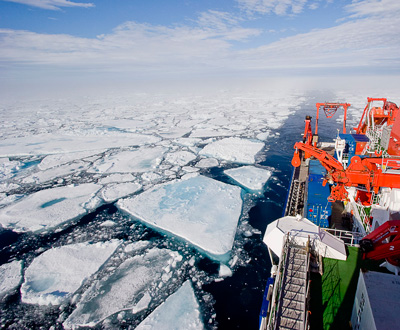Thanks to GEOTRACES-IPY, more and more iron data in the Arctic

Klunder, M. B., Bauch D., Laan P., de Baar H.J.W., van Heuven S., and Ober S. (2012), Dissolved iron in the Arctic shelf seas and surface waters of the central Arctic Ocean: Impact of Arctic river water and ice-melt, J. Geophys. Res., 117, C01027, doi:10.1029/2011JC007133.
Dissolved and Total Dissolvable iron (Fe), together with aluminium (Al), seawater δ18O and other ancillary parameters were acquired in the framework of the GEOTRACES-IPY (GPY11) ARK XXII/2 cruise onboard R/V Polarstern in 2007. The roles of fresh water sources (Eurasian river discharges), sea ice, biological uptake/remineralisation and potential release of iron from the shelf sediments on the distribution of iron in the Arctic waters are discussed. This work also advances some hypotheses perspectives concerning biogeochemical cycles in the ocean under the pressure of global change.
